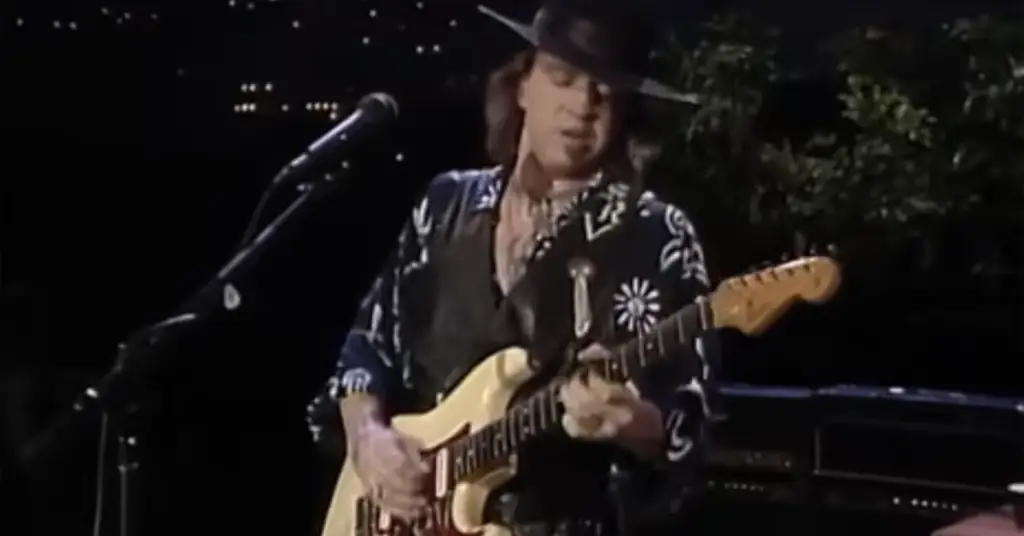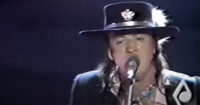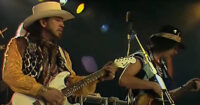Engage your senses: Press play on the video, then stimulate your brain with the article.
The Life and Career of Stevie Ray Vaughan
Stevie Ray Vaughan was an American blues rock guitarist and singer who left a lasting mark on the music world. Born on October 3, 1954, in Dallas, Texas, Vaughan grew up in a musical family. His older brother, Jimmie Vaughan, was also a well-known guitarist. Stevie started playing guitar at a young age, influenced by blues legends like Albert King, B.B. King, and Jimi Hendrix.
In the 1970s, Vaughan began to gain attention with his band, Double Trouble. They played around Texas and started to build a local following. His big break came in 1982 when he performed at the Montreux Jazz Festival. Despite a mixed reaction from the crowd, Vaughan impressed David Bowie and Jackson Browne, who were in the audience. This led to Vaughan playing guitar on Bowie’s “Let’s Dance” album and recording his own debut album, “Texas Flood,” at Browne’s studio.
“Texas Flood,” released in 1983, was a huge success. It featured songs like “Pride and Joy” and “Love Struck Baby.” Vaughan’s fiery guitar playing and soulful voice captivated audiences. He followed this with more albums, including “Couldn’t Stand the Weather” in 1984 and “Soul to Soul” in 1985. His music mixed blues, rock, and jazz, and he was known for his energetic performances and technical skill.
One of Stevie Ray Vaughan’s most memorable live performances was on September 21, 1985, at the Capital Theater in Passaic, New Jersey. During this concert, Vaughan played an amazing version of “Look at Little Sister,” showcasing his exceptional guitar skills and stage presence. The energy in the theater was electric, and fans remember this concert as one of the best examples of Vaughan’s live prowess. His ability to connect with the audience and deliver powerful performances made his concerts unforgettable.
Despite his success, Vaughan struggled with drug and alcohol addiction. In 1986, he entered rehab and got clean, which rejuvenated his life and career. He continued to tour and record, releasing albums like “In Step” in 1989, which won a Grammy Award for Best Contemporary Blues Album. Vaughan’s dedication to music and his ability to overcome personal challenges inspired many.
Tragically, Stevie Ray Vaughan’s life was cut short on August 27, 1990. He died in a helicopter crash after a concert in Wisconsin. He was only 35 years old. Vaughan’s death was a significant loss to the music world, but his legacy lives on through his recordings and the countless musicians he influenced.
Stevie Ray Vaughan’s impact on blues and rock music remains significant. His passionate playing and heartfelt performances continue to inspire new generations of guitarists and music lovers around the world. His life, though brief, was full of musical achievements that ensure he will always be remembered as one of the greats in American music history.
Thank You!
We appreciate your time and dedication to reading our article. For more of the finest blues guitar music, make sure to follow our Facebook page, “I Love Blues Guitar”. We share exceptional selections every day. Thank you once again for your continued support and readership.


![Stevie Ray Vaughan – Look At Little Sister [video]](https://ilovebluesguitar.com/wp-content/uploads/2024/05/stevie-ray-vaughan-look-at-little-sister-200x105.jpg)












